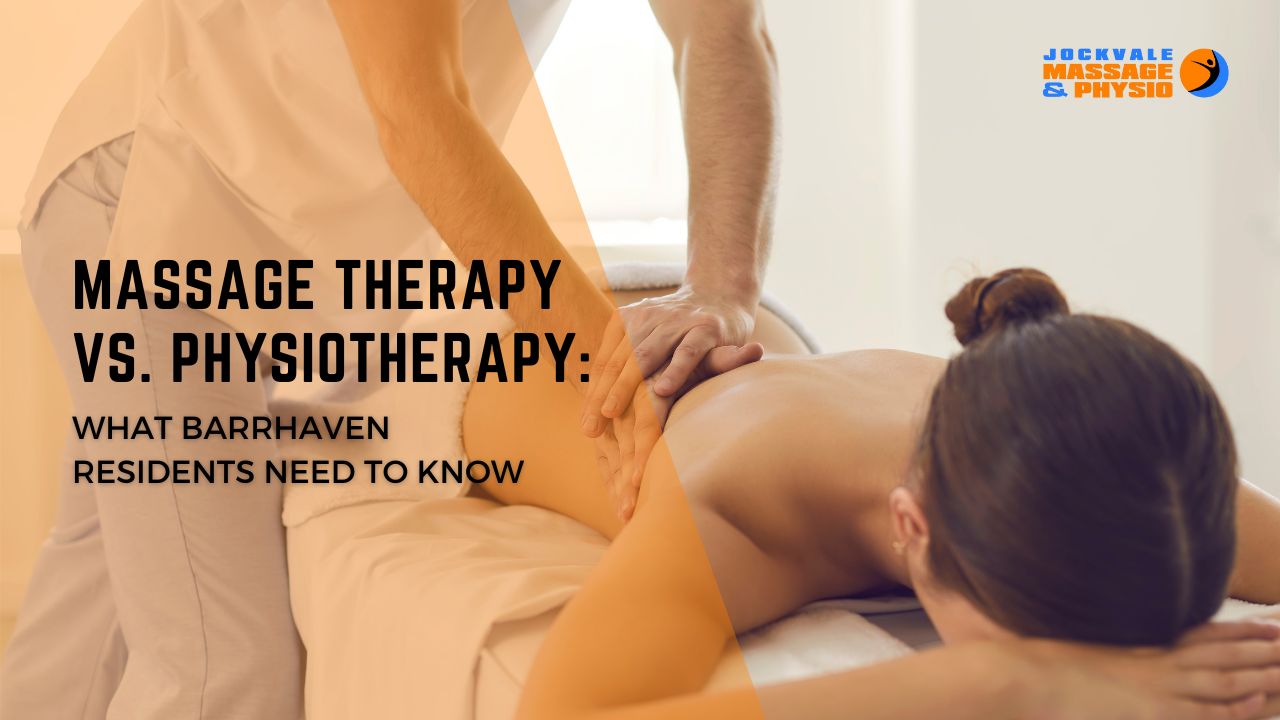When you’re in pain or discomfort, every step towards relief is invaluable. It’s important to find the most effective treatment tailored to your specific needs. Two of the most popular treatments in Barrhaven are massage therapy and physiotherapy. But what exactly is the difference between the two? Which one is right for you?
In this post, we will delve deep into both therapies to guide Barrhaven residents towards making an informed decision.
1. The Core Differences: Purpose and Approach
Massage Therapy: Massage therapy focuses primarily on the manipulation of soft tissues, including muscles, tendons, and ligaments. Its primary aim is to relieve tension, reduce muscle soreness and physical dysfunction. If you’ve been feeling a lot of tension in your back or neck, or have tight muscles from overuse, massage therapy might be what you need to improve or maintain function. Based on your situation, your massage therapist will devise a clinical impression of your condition before starting your treatment.
Physiotherapy: Physiotherapy, on the other hand, has a broader approach. While it includes manual techniques similar to massage, its main goal is to improve movement and function. A physiotherapist assesses and treats physical problems caused by injuries, diseases, and disabilities using exercises, manual techniques, and sometimes even electrotherapy. During the assessment your physiotherapist will develop a diagnosis of your condition before treating you.
2. Treatment Techniques: Beyond the Hands
Massage Therapy: In massage therapy, therapists use their hands, fingers, forearms, and sometimes elbows to apply pressure on the body. Techniques can vary from deep tissue massages, which target inner layers of your muscles, to more relaxing Swedish and Lymphatic Drainage massages.
Physiotherapy: Physiotherapists have a variety of tools in their arsenal. Apart from hands-on manual techniques, they might use ultrasounds, electrical stimulation, heat or cold packs, and tailored exercise programs to treat and rehabilitate patients. They focus on improving the patients’ ability to perform daily activities and restoring function.
3. Duration and Commitment: From Quick Relief to Long-term Goals
Massage Therapy: A typical massage therapy session might last anywhere from 30 minutes to an hour. Many people in Barrhaven find relief after just one or two sessions, though regular visits can help maintain muscle health and relieve chronic tension.
Physiotherapy: Physiotherapy often requires a more extended commitment. It’s about addressing the root cause of your mobility issue and might require multiple sessions over weeks or months. Each session may last up to an hour, with exercises and routines to be followed at home.
4. Which One Is Right for You? Making the Choice in Barrhaven
Your choice between massage therapy and physiotherapy should depend on your unique needs.
- Seeking Immediate Relief? If you’ve had a particularly stressful week and are looking to relax and de-stress, a massage might be the quick fix you need. It’s also beneficial for those who have a more involved condition or injury. Massage therapy can be used in conjunction with physiotherapy, to augment your recovery.
- Facing Mobility Issues or Recovering from Injuries? If you’ve recently had an injury, surgery, or are facing mobility issues due to a chronic condition, physiotherapy is more apt. A physiotherapist can provide a comprehensive treatment plan to restore your movement and function.
While both massage therapy and physiotherapy offer their own set of benefits, it’s essential to understand their unique features to decide which one is right for you. Whether you’re looking to unwind and relax with a therapeutic massage, augment your existing recovery with massage or rehabilitate from an injury through physiotherapy, Barrhaven has excellent professionals ready to help.
Don’t let pain or discomfort dictate your life. Reach out to us for more information or book an appointment to experience relief and rejuvenation. Barrhaven, we’re here to help you move better and feel better.

